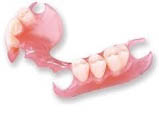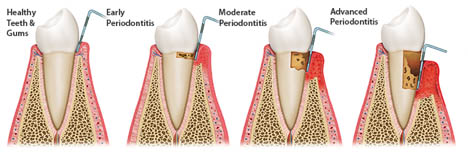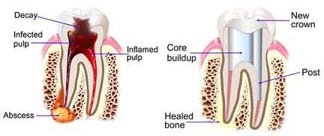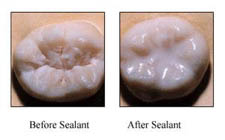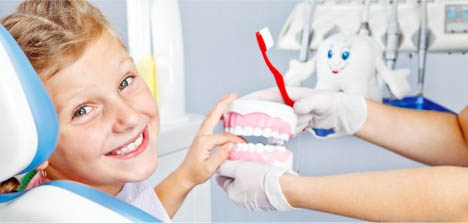Dental Services
Dental tooth bonding is a procedure used to correct dental gaps, chips, cracks and a wide variety of other cosmetic dental problems. Tooth bonding involves a tooth-colored resin material which is applied to teeth, and then hardened with a special light. This causes the resin to bond to the tooth, restoring and correcting the smile. Dental tooth bonding is considered for a variety of conditions:
- Decayed teeth
- Chipped or cracked teeth
- Discolored teeth
- Teeth with gaps or spaces
- Teeth which appear too short
- Dental bonding can change the shape of teeth
- Dental bonding can be used as a cosmetic alternative to amalgam fillings
- Dental bonding can be used to protect any tooth’s root which has been exposed when the gums recede
Tooth bonding is among the easiest and least expensive of all cosmetic dental procedures. Unlike veneers and crowns, which must be manufactured in a laboratory, dental bonding usually can be done in one office visit. Additionally, less tooth enamel is removed compared to procedures involving veneers and crowns. Also, anesthesia is usually not required, unless the bonding involves a cavity.
Bonding is best suited for small cosmetic changes, temporary correction of cosmetic defects, and for correction of teeth in areas of very low bite pressure, such as front teeth.
Dental bridges literally bridge the gap created by one or more missing teeth.
A bridge is made up of two or more crowns for the teeth on either side of the gap -- these two or more anchoring teeth are called abutment teeth -- and a false tooth/teeth in between. These false teeth are called pontics and can be made from gold, alloys, porcelain, or a combination of these materials. Dental bridges are supported by natural teeth or implants.
Benefits of bridges include:
- Restoring your smile
- Restoring the ability to properly chew and speak
- Maintaining the shape of your face
- Distributing the forces in your bite
- properly by replacing missing teeth
- Preventing remaining teeth from drifting out of position
As composites have evolved, they have become the restoration of choice for fillings for many patients. In our office, we frequently use composite restorations for fillings because we can perform a better, more conservative, safer, and more cosmetically pleasing treatment. If placed properly, a composite filling can last longer than amalgam fillings and accomplish conservative treatments not possible with amalgam fillings. Composite fillings only replace the portions of your teeth that have been damaged and no additional reduction of healthy areas of your teeth is required. Additionally, composite restorations are bonded to your teeth. When properly placed with maximum bond strength, the composite restoration can strengthen the weakened tooth.
Advantages of white composite fillings over amalgams:
- Blends in naturally
- Less plaque accumulation and lowers chances for recurrent decay
- Less tooth structure must be removed to make space for the filling
- Easily repaired- any chips can easily be repaired seamlessly with surface roughening and addition of composite
- Reinforces remaining tooth structure- since the composite is bonded to the tooth, it reinforces the remaining structure and prevents forces from causing cracks and fractures with repeated chewing
- Seals the dentin from future decay
A crown is a tooth-shaped cover placed over a tooth that is badly damaged or decayed. Many people call it a cap.
Crowns may be placed for several reasons. Usually the tooth has been broken or severely damaged by decay. As a result, a filling can't replace enough of the tooth or make the tooth strong enough. A crown may hold together parts of a cracked tooth. Crowns can be used to improve appearance as well. They may be placed to cover misshapen or badly discolored teeth.
Crowns usually last at least 7 years. In many cases they last much longer, up to 40 years or so. Maintaining good oral hygiene, including brushing and flossing, will help your crown last longer.
Dentures and Partials are an ideal removable solution when you need to replace a few or several missing teeth. Thanks to the lifelike look, vitality and exceptional fit of these affordable dentures and partial dentures, you no longer need to live with the potential for embarrassment when talking, eating or smiling.
Dentures incorporate your individual characteristics while mimicking the look of natural teeth for full dentures. Specially designed and processed to ensure maximum comfort and fit, Dentures provide a unique custom arrangement of teeth based on your age, sex and natural tooth shape for a beautiful, lifelike look.
Partials are recommended if you need to replace a few missing teeth. They are an esthetic and economical dental partial solution. Designed to fit the natural contours of your mouth, each Partial is custom-made to exhibit excellent fit and maximum comfort for day-to-day wear.
Dental implants are the standard of care when replacing missing or hopeless teeth. They are the next best thing to natural teeth. Stable and strong, a dental implant restores a lost tooth so that it looks, feels, fits and functions like a natural tooth. Eating your favorite foods won’t be an issue. They often last a lifetime with proper care and compared to other options, they require less maintenance. They integrate into the bone helping to protect healthy bone and retaining the natural shape of your face and smile. Dental implants are fixed, meaning they don’t move, click or shift.
Invisalign® takes a modern approach to straightening teeth, using a custom-made series of aligners created for you and only you. These aligner trays are made of smooth, comfortable and virtually invisible plastic that you wear over your teeth. Wearing the aligners will gradually and gently shift your teeth into place, based on the exact movements your dentist plans out for you. There are no metal brackets to attach and no wires to tighten. You just pop in a new set of aligners approximately every two weeks, until your treatment is complete. You’ll achieve a great smile with little interference in your daily life. The best part about the whole process is that most people won't even know you're straightening your teeth.
Light Sedation Dentistry, or Anxiolysis, is very useful for controlling the level of fear our dental patients' may experience prior to their appointments. Anxiolysis will allow you to receive dental treatment in a safe, relaxed state with a reduction in your level of anxiety. This relaxation technique can be safely administered through the use of nitrous oxide and/or prescription medication for light sedation.
With sedation dentistry, you can have most of your dental care completed in one visit. Many patients feel NO DISCOMFORT whatsoever during and after treatment, and have little to no memory of the visit.
With LIGHT SEDATION DENTISTRY, you don't have to be afraid anymore.
Maintaining good oral hygiene is one of the most important things you can do for your teeth and gums. Healthy teeth not only enable you to look and feel good, they make it possible to eat and speak properly. Good oral health is important to your overall well-being. Daily preventive care, including proper brushing and flossing, will help stop problems before they develop and is much less painful, expensive, and worrisome than treating conditions that have been allowed to progress.
In between regular visits to the dentist, there are simple steps that each of us can take to greatly decrease the risk of developing tooth decay, gum disease and other dental problems. These include:
- Brushing thoroughly twice a day and flossing daily
- Eating a balanced diet and limiting snacks between meals
- Using dental products that contain fluoride, including toothpaste
- Rinsing with a fluoride mouth rinse if your dentist tells you to
- Making sure that your children under 12 drink fluoridated water or use a fluoride rinse.
Have you ever heard the phase “it’s like pulling teeth” when something is difficult? Surprisingly to many, extractions are routine procedures. Saving teeth is our main goal, however, sometimes teeth become so severely decayed that they can't be restored and must be removed. The most commonly removed are the wisdom teeth in the very back of your mouth as they often don’t have room to erupt, or will grow in at various angles this can create a pocket for bacteria and infection. The bad teeth are removed to protect healthy ones, saving you from infection, discomfort and reducing costs.
Have you been told that you need a deep cleaning? There’s a big difference between someone who needs a regular, routine cleaning and someone who requires a deep cleaning, or scaling and root planing. Individuals with periodontal disease (gum disease) harbor more harmful, destructive bacteria that have the potential to destroy your jaw bone and other supporting structures thus leading to tooth loss.
A routine teeth cleaning, or, preventive cleaning, maintains a healthy mouth and is typically done every six months. At each visit, a comprehensive dental health exam is conducted and measurements of the gum tissue are taken. With a diagnostic tool called the periodontal probe, measurements are taken. Those within the 1-3mm range that have no bleeding are recorded as having no active disease present. When bleeding (inflammation) is present and the numbers reach 4mm or above, the bacteria causes the gum tissue to pull away from the tooth, causing pockets. When this happens, intervention is necessary to prevent further destruction.
To proactively treat the progressive nature of periodontal disease, appointments are usually separated into two visits. For patient comfort, numbing of the teeth and gum tissue may be necessary to effectively remove tartar buildup below the gumline. Usually, one half of the mouth is treated and it is recommended for the other half to be completed within one week of the first periodontal treatment. Sometimes, adjunctive therapy is necessary which may include antimicrobial rinses, localized antibiotics, or salivary testing. After completing initial periodontal therapy, your oral health will be reevaluated and based upon the status of your periodontal disease, and three to four month periodontal maintenance cleanings will be recommended to prevent relapse.
Root canal is a treatment to repair and save a badly damaged or infected tooth instead of removing it. The term "root canal" comes from cleaning of the canals inside a tooth's root. Decades ago, root canal treatments often were painful. With dental advances and local anesthetics however, most people today have little, if any, pain with a root canal. In fact, it's probably more painful living with a decayed tooth. When a tooth is cracked or has a deep cavity, bacteria can enter the pulp. Left untreated, this bacteria and decaying material can cause a serious infection or a tooth abscess, leading to pulp death, bone loss and loss of the tooth itself. Signs and symptoms may include swelling around your face and neck, a hole in your tooth, toothache or tooth pain, gum swelling, and temperature sensitivity. A root canal will remove all of the bacteria and bad material inside the tooth. Once removed and clean, the tooth is sealed to protect it and then restored to normal function.
WHAT ARE DENTAL SEALANTS?
Sealants are a plastic material that is placed in the pits and fissures of the chewing surfaces of your teeth, particularly the molars at the back because toothbrushes can’t reach all the way into the grooves to clean well.
WHO NEEDS DENTAL SEALANTS?
Kids are notoriously bad brushers and tend to ignore the problem areas in the back of the mouth that lead to cavities and decay, making them the prime target market for sealants. (However, if adults have certain problem areas that could be cured with sealants, this could be an option for them too.) The American Dental Association recommends that kids receive dental sealants as soon as their adult teeth erupt.
Those who are more susceptible to cavities and decay – whether that is because they are genetically prone to cavities, don’t have great oral hygiene habits, or lack access to dental care – should consider getting dental sealants as a preventative measure.
HOW DO DENTAL SEALANTS WORK?
Dental sealants fill in and smooth out the grooves and fissures in your teeth that tend to hide food particles and attract cavity-causing bacteria. According to the American Dental Association, sealants work by “’sealing out’ food and plaque; because toothbrush bristles cannot reach all the way into the depressions and grooves.”
HOW LONG DO DENTAL SEALANTS LAST?
Dental sealants can protect the teeth for up to 10 years, but need to be checked frequently by a dentist for cracks. If dental sealants are worn down, it’s possible for decay to get under the sealant.
ARE DENTAL SEALANTS EFFECTIVE?
Dental sealants have been shown to reduce the risk of cavities in the teeth that are covered. According to Jonathan Shenkin, a spokesman for the American Dental Association, decades of research demonstrate that coating the biting surface of 6-year molars with a resin-based sealant can reduce cavities by up to nearly 80% immediately, and up to 60% for four years or more.
Your child’s dental visit should be around their first birthday. One of most important reasons of this visit is to familiarize your child with the dental office environment and to ease any anxiety associated with future visits. During this time the dentist can examine your child’s dental development and address dental issues such as baby bottle decay, or any teething tenderness while providing preventive care when needed. On this first visit, a gentle but thorough examination will be performed to monitor growth and development and address any problem areas.
Early examination provides your child with preventive dental care while establishing healthy dental habits at an early age. Ensure that your child's future smile is a healthy, confident one. visit today.
Porcelain veneers will give you the smile you've always dreamed and in some cases without any shots, drilling or pain. Improvements in dental science have made veneers very thin, but ultra strong to reduce the amount of tooth material needing removal. They are the perfect solution to cover stained, discolored or chipped teeth, or as a way to fill in spaces between your teeth
Custom-made to fit your mouth, each porcelain veneer is delicately crafted to exhibit a beautiful, lifelike look. Whether replacing multiple teeth, or just a few, take comfort in knowing each veneer will blend naturally with your surrounding teeth.
Keeping our teeth their whitest is a lot harder than it sounds. With all the coffee, wine, tobacco and other foods that have the ability to stain our teeth on a daily basis, even proper maintenance sometimes leaves them a little lackluster. Teeth whitening is an excellent way to restore the natural color of your teeth or even make several shades whiter.
In-Office Whitening:
We apply the whitening gel to your teeth after isolating your lips and gums. You sit back and relax and years of staining are removed in about 90 minutes.
Take Home Trays:
First, we make your custom trays and then you apply the whiting gel in the comfort of your own home. This method is effective, however, will take longer than in-office white.





